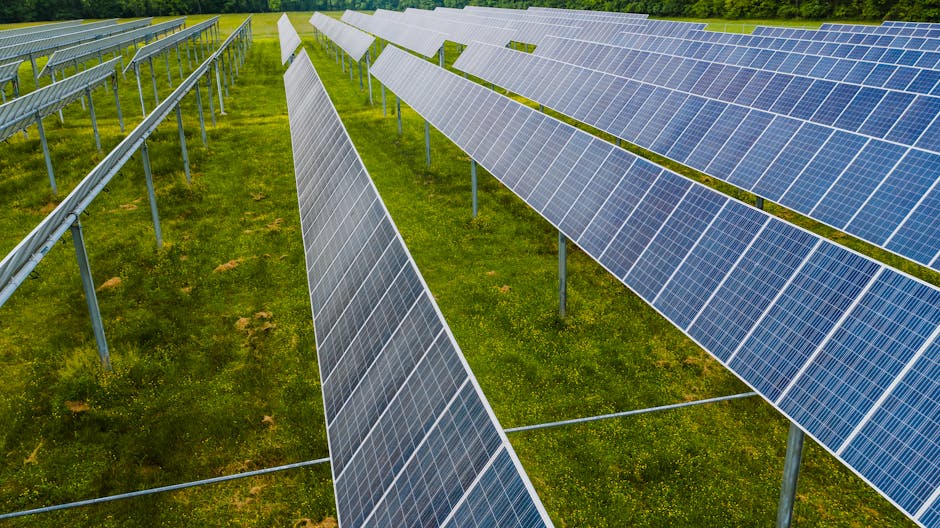How To Calculate Efficiency Of Solar Panel
Solar panels are a fantastic way to harness the sun’s energy and convert it into electricity. But how do we know how well they are performing? This is where calculating the efficiency of solar panels comes into play. In this article, we will break down the concept of solar panel efficiency, how to calculate it, and why it matters. Whether you’re a homeowner considering solar energy or just curious about how solar panels work, this guide will provide you with all the essential information.
Understanding Solar Panel Efficiency
Before diving into calculations, let’s first understand what solar panel efficiency means. Efficiency refers to how well a solar panel converts sunlight into usable electricity. The higher the efficiency, the more electricity you can generate from the same amount of sunlight.
- Definition: Solar panel efficiency is the ratio of the electrical output of a solar panel to the solar energy input it receives.
- Typical Efficiency Rates: Most solar panels have efficiencies ranging from 15% to 22%. High-efficiency panels can exceed 22%.
In simple terms, if a solar panel has an efficiency of 20%, it means that 20% of the sunlight hitting the panel is converted into electricity, while the remaining 80% is lost as heat or reflected away.
Why Is Solar Panel Efficiency Important?
Understanding the efficiency of solar panels is crucial for several reasons:
- Cost-Effectiveness: Higher efficiency means more electricity generated per square foot, which can lead to lower installation costs for the same energy output.
- Space Considerations: If you have limited roof space, choosing high-efficiency panels can maximize your energy production.
- Environmental Impact: More efficient panels can reduce the overall carbon footprint by generating more clean energy.
How to Calculate Solar Panel Efficiency
Calculating the efficiency of a solar panel involves a straightforward formula. Here’s how you can do it:
The Formula
The efficiency of a solar panel can be calculated using the following formula:
Efficiency (%) = (Output Power / Input Power) x 100
Step-by-Step Calculation
Let’s break down the calculation into simple steps:
- Determine Output Power: This is the amount of electricity the solar panel produces, usually measured in watts (W). You can find this information on the panel’s specifications.
- Determine Input Power: This is the amount of solar energy hitting the panel. To calculate this, you need to know the area of the solar panel (in square meters) and the solar irradiance (the power per unit area received from the sun, typically around 1000 W/m² on a sunny day).
- Calculate Input Power: Use the formula: Input Power (W) = Area (m²) x Solar Irradiance (W/m²).
- Plug Values into the Efficiency Formula: Now that you have both output and input power, substitute these values into the efficiency formula.
Example Calculation
Let’s say you have a solar panel with the following specifications:
- Output Power: 300 W
- Area: 1.6 m²
- Solar Irradiance: 1000 W/m²
First, calculate the Input Power:
Input Power = Area x Solar Irradiance = 1.6 m² x 1000 W/m² = 1600 W
Now, plug the values into the efficiency formula:
Efficiency = (Output Power / Input Power) x 100 = (300 W / 1600 W) x 100 = 18.75%
This means the solar panel has an efficiency of 18.75%.
Factors Affecting Solar Panel Efficiency
Several factors can influence the efficiency of solar panels:
- Temperature: Solar panels are less efficient at higher temperatures. They perform best in cooler conditions.
- Angle of Installation: The angle at which panels are installed can affect how much sunlight they receive. Ideally, they should be positioned to face the sun directly.
- Shading: Any shading from trees, buildings, or other obstructions can significantly reduce efficiency.
- Quality of Materials: Higher-quality solar cells typically have better efficiency ratings.
Improving Solar Panel Efficiency
If you want to maximize the efficiency of your solar panels, consider the following tips:
- Regular Cleaning: Dust and debris can block sunlight. Regularly clean your panels to ensure they receive maximum sunlight.
- Optimal Placement: Install panels in a location that receives full sunlight for most of the day.
- Use of Tracking Systems: Solar trackers can adjust the angle of the panels throughout the day to follow the sun, increasing energy capture.
- Invest in High-Efficiency Panels: If you’re installing new panels, consider investing in high-efficiency models.
Conclusion
Calculating the efficiency of solar panels is a vital step in understanding their performance and maximizing their potential. By knowing how to calculate efficiency and what factors influence it, you can make informed decisions about your solar energy system. Whether you’re looking to install solar panels or simply want to learn more about renewable energy, understanding efficiency will help you appreciate the technology behind solar power.
Remember, the goal is to harness as much of the sun’s energy as possible, and with the right knowledge and practices, you can ensure your solar panels are working at their best!
FAQs
What is the average efficiency of solar panels?
The average efficiency of most solar panels ranges from 15% to 22%, with some high-efficiency models exceeding 22%.
Can solar panel efficiency change over time?
Yes, solar panel efficiency can decrease over time due to wear and tear, but most panels come with warranties that guarantee a certain level of efficiency for 25 years or more.




